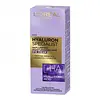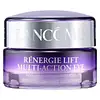What's inside
What's inside
 Key Ingredients
Key Ingredients

 Benefits
Benefits

 Concerns
Concerns

 Ingredients Side-by-side
Ingredients Side-by-side

Water
Skin ConditioningDimethicone
EmollientGlycerin
HumectantSilica
AbrasiveAcrylamide/Sodium Acryloyldimethyltaurate Copolymer
Emulsion StabilisingPrunus Armeniaca Kernel Oil
MaskingAdenosine
Skin ConditioningCaffeine
Skin ConditioningDisodium EDTA
Hydroxyethylpiperazine Ethane Sulfonic Acid
BufferingSodium Hyaluronate
HumectantTriethanolamine
BufferingTocopheryl Acetate
AntioxidantAcrylates/C10-30 Alkyl Acrylate Crosspolymer
Emulsion StabilisingCI 77891
Cosmetic ColorantIsohexadecane
EmollientMica
Cosmetic ColorantPolysorbate 80
EmulsifyingSorbitan Oleate
EmulsifyingTin Oxide
AbrasiveDimethicone/Vinyl Dimethicone Crosspolymer
Skin ConditioningDimethiconol
EmollientChlorphenesin
AntimicrobialPhenoxyethanol
PreservativeWater, Dimethicone, Glycerin, Silica, Acrylamide/Sodium Acryloyldimethyltaurate Copolymer, Prunus Armeniaca Kernel Oil, Adenosine, Caffeine, Disodium EDTA, Hydroxyethylpiperazine Ethane Sulfonic Acid, Sodium Hyaluronate, Triethanolamine, Tocopheryl Acetate, Acrylates/C10-30 Alkyl Acrylate Crosspolymer, CI 77891, Isohexadecane, Mica, Polysorbate 80, Sorbitan Oleate, Tin Oxide, Dimethicone/Vinyl Dimethicone Crosspolymer, Dimethiconol, Chlorphenesin, Phenoxyethanol
Water
Skin ConditioningTheobroma Cacao Seed Butter
EmollientDimethicone
EmollientGlycerin
HumectantIsohexadecane
EmollientPropanediol
SolventAlcohol Denat.
AntimicrobialGlyceryl Stearate
EmollientPEG-20 Stearate
EmulsifyingPEG/PPG/Polybutylene Glycol-8/5/3 Glycerin
HumectantStearic Acid
CleansingPEG-100 Stearate
Palmitic Acid
EmollientOctyldodecanol
EmollientCI 77891
Cosmetic ColorantCI 17200
Cosmetic ColorantC13-14 Isoparaffin
EmollientGuanosine
Skin ConditioningMica
Cosmetic ColorantSecale Cereale Seed Extract
AbrasiveSodium Acetylated Hyaluronate
HumectantHydrolyzed Soy Protein
HumectantHydrolyzed Linseed Extract
Skin ConditioningSodium Hydroxide
BufferingSodium Benzoate
MaskingPhenoxyethanol
PreservativeAdenosine
Skin ConditioningAcetyl Tetrapeptide-9
Skin ConditioningCaffeine
Skin ConditioningTrisodium Ethylenediamine Disuccinate
Polyacrylamide
Dimethiconol
EmollientLimonene
PerfumingPentylene Glycol
Skin ConditioningPentaerythrityl Tetra-Di-T-Butyl Hydroxyhydrocinnamate
AntioxidantTin Oxide
AbrasiveBenzyl Alcohol
PerfumingCaprylyl Glycol
EmollientCapryloyl Salicylic Acid
ExfoliatingMyristic Acid
CleansingGeraniol
PerfumingLaureth-7
EmulsifyingParfum
MaskingWater, Theobroma Cacao Seed Butter, Dimethicone, Glycerin, Isohexadecane, Propanediol, Alcohol Denat., Glyceryl Stearate, PEG-20 Stearate, PEG/PPG/Polybutylene Glycol-8/5/3 Glycerin, Stearic Acid, PEG-100 Stearate, Palmitic Acid, Octyldodecanol, CI 77891, CI 17200, C13-14 Isoparaffin, Guanosine, Mica, Secale Cereale Seed Extract, Sodium Acetylated Hyaluronate, Hydrolyzed Soy Protein, Hydrolyzed Linseed Extract, Sodium Hydroxide, Sodium Benzoate, Phenoxyethanol, Adenosine, Acetyl Tetrapeptide-9, Caffeine, Trisodium Ethylenediamine Disuccinate, Polyacrylamide, Dimethiconol, Limonene, Pentylene Glycol, Pentaerythrityl Tetra-Di-T-Butyl Hydroxyhydrocinnamate, Tin Oxide, Benzyl Alcohol, Caprylyl Glycol, Capryloyl Salicylic Acid, Myristic Acid, Geraniol, Laureth-7, Parfum
 Reviews
Reviews

Ingredients Explained
These ingredients are found in both products.
Ingredients higher up in an ingredient list are typically present in a larger amount.
Adenosine is in every living organism. It is one of four components in nucleic acids that helps store our DNA.
Adenosine has many benefits when used. These benefits include hydrating the skin, smoothing skin, and reducing wrinkles. Once applied, adenosine increases collagen production. It also helps with improving firmness and tissue repair.
Studies have found adenosine may also help with wound healing.
In skincare products, Adenosine is usually derived from yeast.
Learn more about AdenosineCaffeine is most associated with coffee, tea, and cacao. In skincare, it helps with calming inflammation and is rich in antioxidants.
While caffeine is used to treat cellulite and and dark circles, further studies are needed to prove this. It has been believed to help with these skin conditions due to its ability to dilate blood vessels and increase blood flow.
Some studies are looking into caffeine's ability to protect against UV rays.
Learn more about CaffeineCi 77891 is a white pigment from Titanium dioxide. It is naturally found in minerals such as rutile and ilmenite.
It's main function is to add a white color to cosmetics. It can also be mixed with other colors to create different shades.
Ci 77891 is commonly found in sunscreens due to its ability to block UV rays.
Learn more about CI 77891Dimethicone is a type of synthetic silicone created from natural materials such as quartz.
What it does:
Dimethicone comes in different viscosities:
Depending on the viscosity, dimethicone has different properties.
Ingredients lists don't always show which type is used, so we recommend reaching out to the brand if you have questions about the viscosity.
This ingredient is unlikely to cause irritation because it does not get absorbed into skin. However, people with silicone allergies should be careful about using this ingredient.
Note: Dimethicone may contribute to pilling. This is because it is not oil or water soluble, so pilling may occur when layered with products. When mixed with heavy oils in a formula, the outcome is also quite greasy.
Learn more about DimethiconeDimethiconol is a silicone that resembles the popular dimethicone. Like other silicones, it is an emollient. Emollients create a thin film on skin to prevent moisture from escaping.
This ingredient helps to create a silky texture and improve spreadability. Due to its high molecular weight and thickness, it is often combined with cyclopentasiloxane.
Glycerin is already naturally found in your skin. It helps moisturize and protect your skin.
A study from 2016 found glycerin to be more effective as a humectant than AHAs and hyaluronic acid.
As a humectant, it helps the skin stay hydrated by pulling moisture to your skin. The low molecular weight of glycerin allows it to pull moisture into the deeper layers of your skin.
Hydrated skin improves your skin barrier; Your skin barrier helps protect against irritants and bacteria.
Glycerin has also been found to have antimicrobial and antiviral properties. Due to these properties, glycerin is often used in wound and burn treatments.
In cosmetics, glycerin is usually derived from plants such as soybean or palm. However, it can also be sourced from animals, such as tallow or animal fat.
This ingredient is organic, colorless, odorless, and non-toxic.
Glycerin is the name for this ingredient in American English. British English uses Glycerol/Glycerine.
Learn more about GlycerinIsohexadecane is added to enhance texture, emulsify, and to help cleanse. It is an isoparrafin. It is a component of petrolatum.
Due to its large size, Isohexadecane is not absorbed by the skin. Instead, it sits on top and acts as an emollient. Emollients help keep your skin soft and smooth by trapping moisture within.
Isohexadecane is often used in products designed to help oily skin. It is lightweight and non-greasy while helping to moisturize. When mixed with silicones, it gives a product a silky feel.
Learn more about IsohexadecaneMica is a naturally occurring mineral used to add shimmer and color in cosmetics. It can also help improve the texture of a product or give it an opaque, white/silver color.
Serecite is the name for very fine but ragged grains of mica.
This ingredient is often coated with metal oxides like titanium dioxide. Trace amounts of heavy metals may be found in mica, but these metals are not harmful in our personal products.
Mica has been used since prehistoric times throughout the world. Ancient Egyptian, Indian, Greek, Roman, Aztec, and Chinese civilizations have used mica.
Learn more about MicaPhenoxyethanol is a preservative that has germicide, antimicrobial, and aromatic properties. Studies show that phenoxyethanol can prevent microbial growth. By itself, it has a scent that is similar to that of a rose.
It's often used in formulations along with Caprylyl Glycol to preserve the shelf life of products.
Tin Oxide is an inorganic oxide used to add opacity and volume to a product. In nature, it is already found in mineral form. The main ore of tin is an opaque and shiny mineral called casseterite.
Tin Oxide helps remove translucency in a product, or make it more opaque. Besides adding opacity, tin oxide is used for bulking to add volume.
Water. It's the most common cosmetic ingredient of all. You'll usually see it at the top of ingredient lists, meaning that it makes up the largest part of the product.
So why is it so popular? Water most often acts as a solvent - this means that it helps dissolve other ingredients into the formulation.
You'll also recognize water as that liquid we all need to stay alive. If you see this, drink a glass of water. Stay hydrated!
Learn more about Water